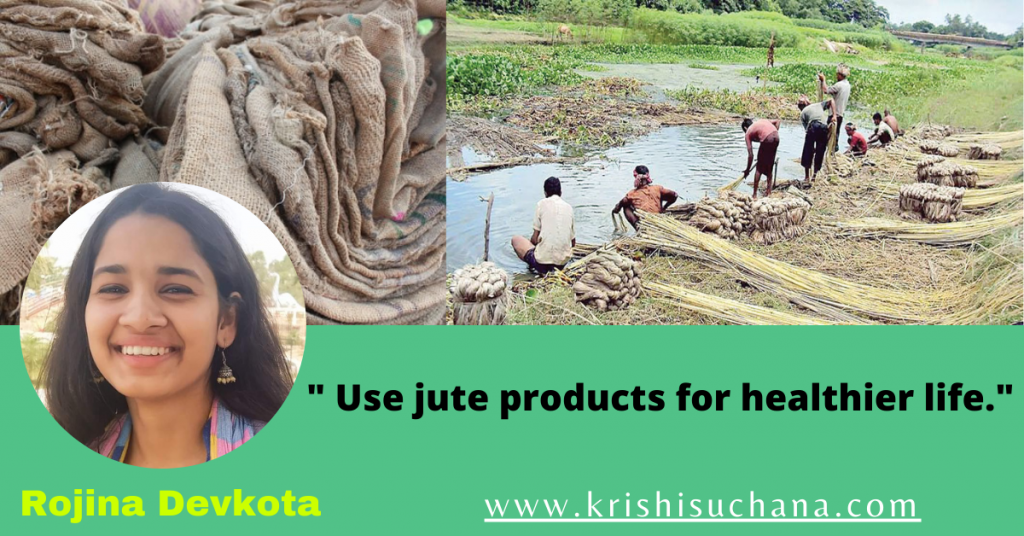Why farmers are more interested on ribbon retting over stem retting?

Nepal is really blessed with diverse topography. People follow subsistence farming. Agricultural practices have changed in recent years in Nepal. However, agriculture in Nepal is slowly becoming commercial oriented.
In 1990s, agricultural policies in Nepal have focused on the growing of cash crops as a way to increase income of farmers. Some of the important cash crops grown in Nepal are cotton, jute, tobacco, rubber, sugarcane, sugarbeet etc.
Among them , Jute is an important fibre grown after cotton .Jute is associated with the process of retting .It is one of the leading crops among all crops. It is also well known as golden fibre. The fibres are biodegradable, environmentally benign and renewable, and provide reliable employment in many rural areas. In Nepal, it is grown mainly in the eastern part i.e. Jhapa, Morang, Sunkara and Udayapur district. Jute research centre was handed over to National Agriculture Research Council (NARC) and all the responsibilities of Jute Research and development Program was given to Jute Research Program (JRP) and started in research activities under NARC since July 1993.
Jute crop requires almost 4 months to give full production. However, it is very much influenced by environmental parameter like temperature, rainfall, retting water, fibre quality and so on. The area, production and yield over the last ten years period in jute production is at increasing rate. However, in the year 2016/17 ,2017/18 yield of jute was 1.47 ton/ha which was later decreased to about 1.45 ton/ha in the year 2018/19.
So, there are various reasons behind ups and down of jute production. Among them ,retting of jute is an important part that is need to be focused .Incomplete retting makes trouble in extraction of fibre .To obtain fibre with good length and strength proper care and attention is mandatory to fetch a good market price.
Environment is the home of organisms whether micro or macro but our home is hazardously degraded. Have we ever realized what might be the reason behind it? We are much familiar about the economic benefits of jute and its demand in the market. But supply is still underlined. There may be various reasons behind it lack of input, plans policies, factories have not been able to go full production, lack of infrastructure, lack of technical know-how, jute productions not satisfactory. Therefore, for the proper use of jute fibre, it is necessary to practice suitable retting process of jute.
Retting is a process of separating the fibre from woody stem through microbial process. If fibre comes out easily from the thumb and fingers retting is considered complete. The optimum temperature is around 25 °C. After retting, the fibres are extracted manually, washed in clean water and sun-dried before marketing. Generally, there are two main process of retting jute.
- Stalk /Stem retting:
- Ribbon retting:
- Since stem retting is a time-consuming process, during the process of jute retting, different microorganisms like bacteria and fungi grow at green jute in the water of pond/river which is found to be harmful for fish cultivation. That makes a great impact on the price of cultivated fish.
- Excessive decomposition of biomass in stagnant water causes more environment pollution which is less in case of ribbon retting.
- All the jute stem in water may not be completely submerged. That produces croppy fibres of extremely low value in case of stem retting.
- It takes a long time to pull out fibres from jute.
- Quality of fibre improves
- Importantly, lesser amount of water is required.
It is also known as traditional retting method in which plant is immersed in sufficient water. It is done on open natural water bodies. In this process labour is only required for cutting the jute stem in the field and carrying out it from field to the water bodies to submerge under water for microbial action. After 7-8 days the retting process will be complete. It can be examined by pressing the stem with the thumb and fingers.
In ribbon retting, barks are separated from the stem before steeping in water. The separated barks are tied into bundles. Examine the completeness of retting after 7-8 days of submerging bundles of bark into the water.
Bangladesh jute research institute evolved a new technology of hand rubbing with bamboo hook. It is a great way, where a ribbon can be very easily separated from woody core. Before retting, the separated ribbons should be arranged into ring form. Retting may be conducted in artificially made s ditches around the area of house or in jute field covering the ditches with polythene sheets.
Ribbon retting method has gained more popularity in recent days. Water is the essential factor for retting of jute. Major jute growing areas of Nepal face water scarcity problem as a result of which poor quality fibres are produced. If water is not fulfilled both quality and quantity will be declined in near future and we don’t want that. An alternative for minimizing retting water requirement is ribbon retting method.
Three decades ago, country used to export jute to Europe, but this status is declining year by year. Though 15000 people are employed by jute industry in Nepal, supply is not satisfactory. If we want to make environment clean ,jute products should be encouraged .Plastic bags must be substituted .In order to export our products, good quality fiber is most to meet the international demand .So why are we late to adopt new technologies? Although it is an expensive process and if government focuses on giving a credit facilities to the farmers, yield of jute can be increased 2 to 3 times than expected one .
Writer: Rojina Devkota (Address: Jhapa, College: Gauradaha Agriculture Campus)

